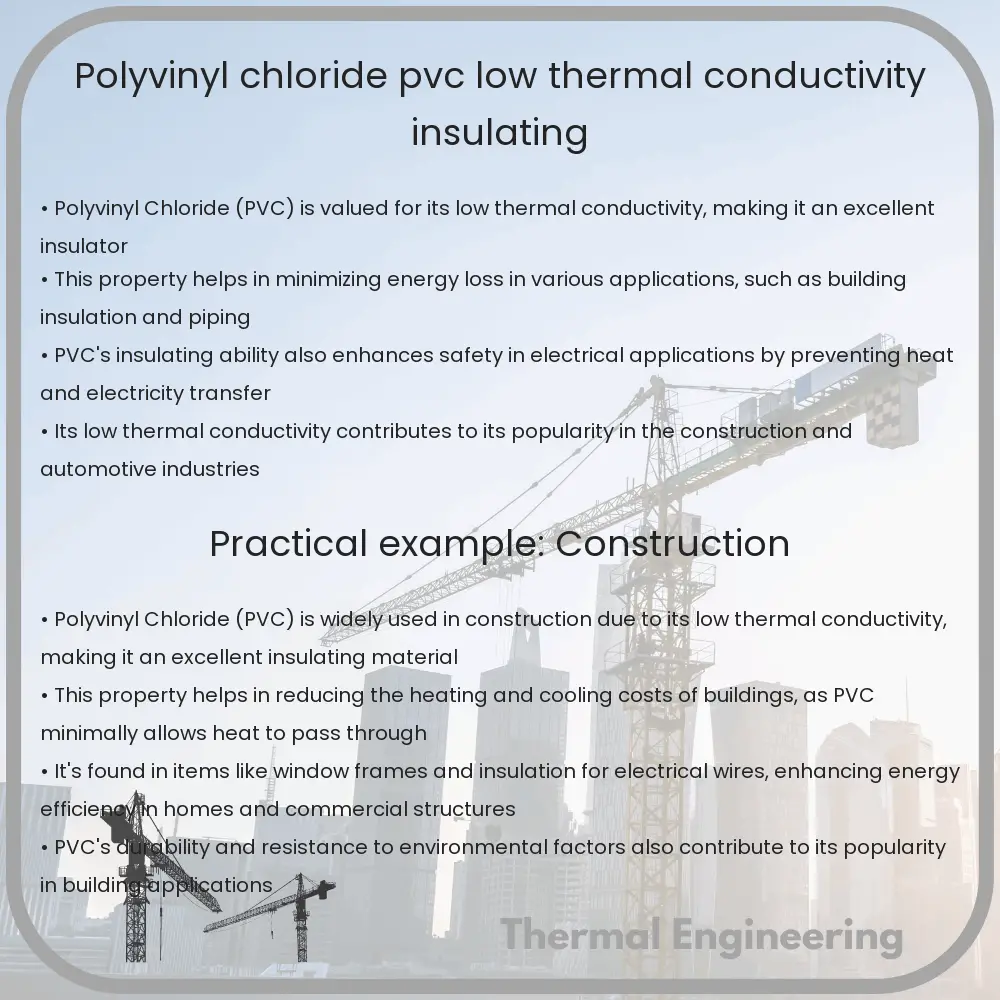Learn about Polyvinyl Chloride (PVC), a widely used plastic with low thermal conductivity, ideal for insulation and engineering applications.

Understanding Polyvinyl Chloride (PVC) and Its Low Thermal Conductivity
Polyvinyl Chloride, commonly known as PVC, is a widely used synthetic plastic polymer. It ranks as the third most produced plastic after polyethylene and polypropylene. This versatility and prevalence are due to its chemical stability, resistance to weathering, and excellent insulating properties. In this article, we will focus on PVC’s low thermal conductivity and its implications in engineering and everyday applications.
What is Thermal Conductivity?
Thermal conductivity is a material property that measures the ability of a material to conduct heat. It is denoted by the symbol ‘k’ and is typically measured in watts per meter-kelvin (W/m·K). Materials with high thermal conductivity can transfer heat quickly, while those with low thermal conductivity are better insulators.
PVC’s Low Thermal Conductivity
PVC has a low thermal conductivity, which ranges typically between 0.14 to 0.28 W/m·K. This low rate of thermal conductivity makes it an excellent material for applications where minimization of heat transfer is crucial. The low thermal conductivity of PVC is primarily due to its high resistance to molecular motion and energy transfer, a characteristic feature of many polymers.
Applications of PVC in Insulation
Due to its insulating properties, PVC is extensively used in building and construction, notably in window frames and doors, where it helps maintain internal temperature levels, reducing heating and cooling costs. Further applications of PVC with its low thermal conductivity include:
- Electrical Insulation: PVC is commonly used in electrical cables and wires as an insulating material, preventing accidental electrical discharges and resistances.
- Piping: In plumbing, PVC pipes are employed not only due to their resistance to chemical corrosion but also because they minimize heat transfer between the pipe’s contents and the external environment.
Benefits of Using PVC
The use of PVC extends beyond just its thermal properties. Some of the universal advantages of PVC include:
- Durability: PVC is resistant to oxidation and degradation, making it last longer than many other materials.
- Cost-Effectiveness: It is relatively inexpensive to produce and maintain, making it a cost-effective option for a variety of applications.
- Chemical Resistance: PVC’s resistance to chemicals, water, and the general environment makes it suitable for harsh engineering applications.
- Recyclability: PVC can be recycled, reducing its environmental impact and promoting sustainable use in manufacturing.
In conclusion, PVC’s low thermal conductivity plays a crucial role in its selection as a material for various applications, especially where insulation is a critical factor. Its additional properties of durability, chemical resistance, and cost-effectiveness further justify its wide usage in the engineering and construction sectors. Understanding these properties helps in designing more efficient and effective products and infrastructure, catering to our advancing technological and environmental needs.